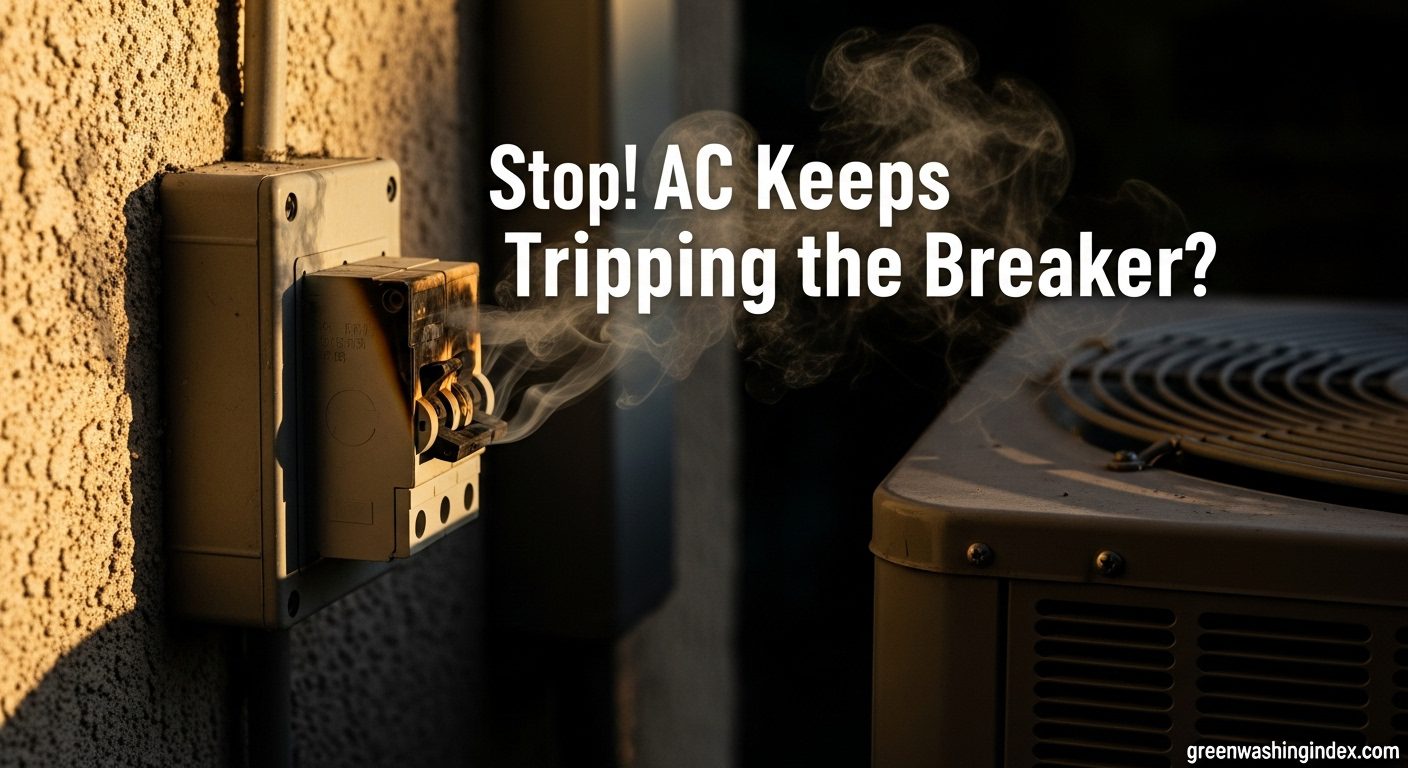
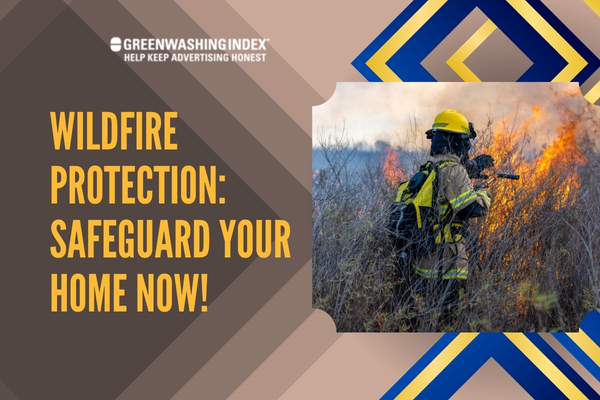
Have you ever thought about what it takes to keep your home safe when wildfires blaze nearby? It might seem like something out of a movie, but for many folks, it’s the real deal. Think about watching those big flames licking at houses on the news and wondering, “Is my place next?” That’s where wildfire protection comes in – a game-changer in keeping your home and loved ones out of harm’s way. So grab a seat, ’cause we’re diving into how to shield your space from fiery foes.
If you’ve found yourself wondering how to fireproof your house against wildfires, I want to share some straightforward steps that can make a big difference. Start by clearing any dead plants or rubbish around your house because these are quick fuel for fires. Make sure there are no low tree limbs near your home that could catch and spread flames.
Consider using materials that won’t burn easily for things like roofs, decks, and fences. If you can, install double-pane windows because they can stand up to heat better than single panes. Now, these tips don’t cover everything—it’s a start—but they’re solid moves toward making your home tougher against wildfire threats.
What You’ll Learn Here:
When I think about keeping my house safe, there’s a lot to consider. But when it comes to wildfires, I know that taking some smart steps can really make a difference. Understanding the risks and knowing how to check my home matters a whole lot.
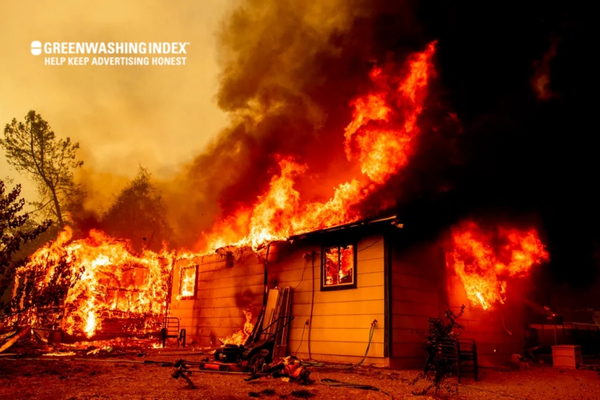
I’ve learned that one of the key steps in wildfire protection is understanding my local area. It’s not just about looking at my house but grasping what’s happening around me. This means getting familiar with how often fires occur nearby, what kind of weather patterns exist, and when the danger of fires is highest.
In some places, like California or Australia, wildfires are a common story. Hot summers and strong winds can turn a small spark into a big fire in no time. But it’s not just these areas that have to watch out. Many regions with dry seasons get wildfires, too.
Take Colorado, for example. They’ve had their share of big fires because of both hot weather and lots of forests, which burn easily if they get too dry. I remember hearing about folks there who didn’t think a wildfire would reach their homes until they saw flames on the horizon.
So, when I look at my home and think about fire safety, I start by paying close attention to seasons when the risk goes up: usually summer and fall. Then, I keep an eye on the news for any reports of fires starting near me.
Now let’s talk about taking a good look at our homes to check how safe they are from wildfires – something like giving your house a checkup.
First off, the type of materials your home is made out of makes a big difference. Are your walls or roofs made from stuff that burns easily? That’s something you might want to change if you can because materials that don’t catch fire easily can give your house better chances against wildfires.
Then there are things like vents or open spaces where embers from fires can sneak in and start burning stuff inside your home without you even noticing right away. Those need covers or screens strong enough to keep embers out but still let air flow through because we all need fresh air.
Another thing is the plants around your home – you know, bushes, trees, stuff like that. They shouldn’t be too close to your walls because if they catch fire, they could easily spread to your house. It helps if these plants are kept well watered and trimmed so even if there’s a fire nearby, it might not reach them so quickly — some people call this “ember-resistant landscaping.”
This “home audit” isn’t something difficult, but it sure makes me feel better knowing I’ve done what I can to protect my place against those unpredictable wildfires.
Also Read: Rice Composting: Ultimate Guide to Nutrient-Rich Soil
When it comes to wildfire protection, one of the smartest moves you can make is setting up what we call “defensible space zones” around your house. This means I keep a safe area where fires are less likely to spread. It’s like having a buffer zone between your home and the grass, trees, or shrubs that could catch fire.
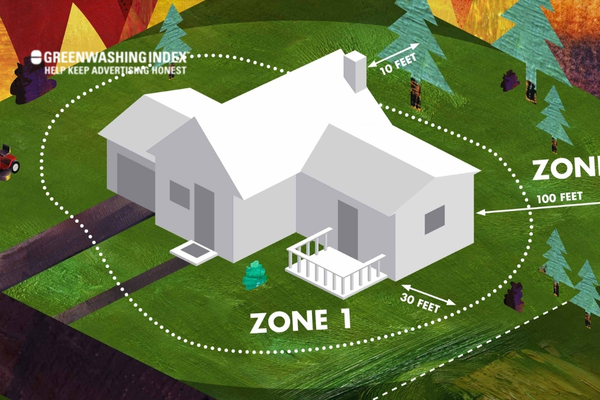
Spacing and landscaping are super important for keeping wildfires away from your home. How?
By getting rid of stuff that burns easily, which is right next to your house:
Creating this kind of space isn’t just good for stopping fires; it also gives firefighters room to do their job if they need to protect your house.
Not all plants are equal when it comes to fire safety. Some plants are less likely to burn, and that’s who you wanna have in your garden:
Choose Fire-resistant Plants:
Place Plants Carefully:
And remember with landscaping:
Making sure my home is surrounded by well-planned greenery isn’t just about making it look nice; it’s an essential part of house wildfire defense. With these tips in mind, I know I’m taking big steps toward protecting my home from wildfires.
Also Read: Composting Onions: Unearthing the Truth and Squashing Myths
When I think about wildfire protection, the outside of my home is where I start. It’s like the armor that keeps the flames away. So, making sure my house can stand up to a wildfire is a big deal.
Using stuff that doesn’t burn easily is common sense, but it does so much more for keeping my home safe from wildfires. I’m talking about picking the right materials for everything on the outside – from the very top to the bottom.
Picking these materials might cost me a bit more in some cases, but they’re worth every penny if they help save my home from fires.
Windows and doors aren’t just about looking good – they need to keep out heat too. When I upgraded mine, here’s what I focused on:
All these upgrades take time and thought, but for me, keeping my house safer from fires makes them undeniable priorities. Fireproofing techniques aren’t just about what’s trendy; it’s about making practical choices for long-term protection – both personal safety and saving money over time by preventing disaster damage.
Also Read: Eco-Friendly Paper Towels: A Composting Guide You Need
No one ever wants to think about a wildfire reaching their home, but it’s really important to be ready just in case. So, how do you keep the inside of your house safe from wildfires? Let’s talk about some things you can do.
Making sure that a fire won’t easily start inside your house is super key. Here are some ways to do that:
Following these steps make it harder for fires to start up inside if those scary wildfires get close.
In case a wildfire does come knocking at your door, having a plan ready is super important. I’ll walk you through creating one:
Remembering these tips can help give you peace of mind because if nature gets tough – you’re already prepared!
So there we have it! Protecting our homes from wildfires means getting ahead before trouble starts — focusing on making indoors less flammable and having an action-ready plan just in case things heat up outside our doors. It might sound like heaps of work, but taking it step by step will make your home way safer against wildfires!
Also Read: Composting Cheese: Can It Be Done? Complete Guide
Wildfire protection is a big worry for many people living near forests or dry lands. To fireproof houses from wildfires, new tech advancements are really helping. Let’s dig into some smart ways to beef up our home defense against fires.
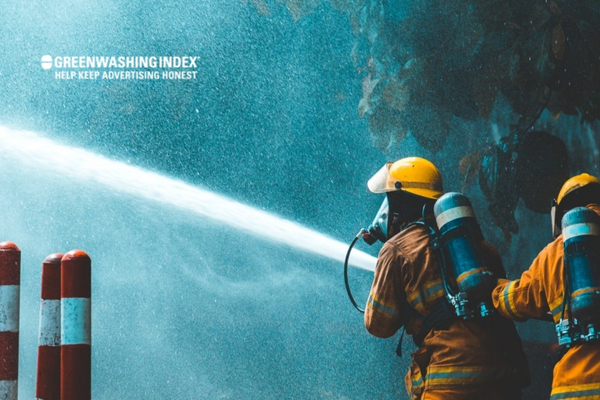
Today, we can fit our homes with smart gadgets that do way more than just turn lights off and on. Home automation can be a big deal when it comes to fighting fires.
Firstly, think about smoke detectors that talk to you. These detectors don’t just beep loudly when they smell smoke; they also send alerts straight to your phone, even if you’re not home!
Then, there’s the smart sprinkler system. Imagine having sprinklers fitted around your property that can start spraying water by themselves when heat or fire is detected. They’re like your personal firefighters, ready to jump into action 24/7.
Next up are thermal cameras — cool gadgets that let you see hot spots around your property through an app on your phone. If a fire starts nearby, you’ll know exactly where the trouble is starting even before it reaches you.
And don’t forget about automatic window and vent closures! In case of wildfire, these closures seal up the house and keep harmful embers out so they can’t ignite anything inside.
Here’s a rundown of what these technologies do:
What tools are we talking about? Innovations are made especially for keeping houses safe from fires without needing a whole team of firefighters in the backyard.
There’s this thing called fire retardant gels — kind of like super-soakers but for protecting houses! These gels make a wet barrier on walls and roofs so that flying sparks or embers won’t catch anything on fire quickly.
And how about personal water tanks with pumping stations? These aren’t simple garden hoses; these systems have high-grade pumps pushing water much further than usual hoses could reach. They’re designed to drench every inch of space around a house if needed.
Let’s not skip over fire blankets — big sheets made from special materials meant to resist major heat and flames. If some part of the outside starts catching fire, throwing one of these over can help stop it from spreading faster.
To highlight:
Having techy stuff like smart sensors and heavy-duty firefighting tools gives us extra strength in wildfire protection at home. Homes get smarter every day with new devices designed specifically to keep us safer from blazes – giving peace of mind knowing we’re prepped as best as possible if wildfires decide to knock at our doors!
Also Read: Pineapple Composting: Your Ultimate Guide to Doing it Right!
When it comes to protecting your home from wildfires, one of the key steps is to make sure you’ve got the financial side of things sorted out. This means checking your insurance coverage closely. Insurance can be a tricky thing, but I’ll break it down to make sure you know what to look for in your policy.
Your insurance policy is like a safety net for your house. When a wildfire happens, this net catches you and helps fix or replace things that are damaged by the fire. Here’s how you can understand what’s in yours:
Remembering these points helps ensure that when wildfires threaten homes, families aren’t worried about money right away—they’ve got support lined up from their insurers, ready to step in and help with repairs and replacements needed due to fire damage.
By understanding these parts of an insurance policy and making sure they’re matched up against potential risks from wildfires, homeowners can rest easier knowing they have good financial support in place for effective wildfire protection measures and recovery if necessary. Always talk with an insurance agent directly if anything is unclear—they’re trained professionals who guide customers through these details every day.
A lot of folks think wildfires only happen in certain places or seasons. This is not true. Wildfires can strike almost anywhere and at any time, so it’s smart to be ready no matter what.
You should check your plans and kits at least once a year. It’s good to do this because things change — like phone numbers, medicines, or even routes you might need to take if you have to leave your house quickly.
Yes, some governments offer help to make your home safer from wildfires. These programs can give money or advice on how to fireproof your place better. It’s worth checking with local authorities for what’s up for grabs.
When dealing with wildfire protection, it’s crucial to remember that a house is more than just a structure; it’s a home filled with memories and dreams. Fireproofing techniques might seem extensive and even daunting, but they are an investment in peace of mind and safety. By understanding your local environment, creating defensible space zones, using fireproof materials for construction, and being prepared for emergencies with plans and technology, you’re setting up strong defenses against wildfires.
Remember: fire respects no boundary. Therefore, taking steps to safeguard your abode should be a top priority for every homeowner living in fire-prone areas.

Don't let aphids, slugs, and caterpillars ruin another plant. Take back control with simple, natural methods that actually work.